Stop the Sportsman’s Heritage Act of 2012 by contacting your senators NOW! Yesterday the United States House of Representatives passed “The Sportsman’s Heritage Act of 2012” also known as H.R. 4089.
A few of things you should know about this bill:
- It will weaken the Marine Mammal Protection Act by allowing polar bear trophy hunters to import sport-hunted bears from Canada
- It will open up millions of acres of sensitive public lands to hunting
- It will further delay the inevitable switchover by hunters from using toxic lead shot to non-toxic ammunition
As of May 2008 the U.S has listed the polar bear as a threatened species under the Endangered Species Act. In Canada and Russia, polar bears are listed as a species of special concern.
So this act allows polar bear trophy hunters to bring their bear heads and hides back into the U.S. encouraging more hunters to kill more bears. Worse than that, it will open up huge swaths of protected wilderness areas to public hunting, and facilitate sport hunting in national parks. And the icing on the cake? This bill, already passed by the House of Representatives, would prevent the Environmental Protection Agency from stopping the use of lead shot, which poisons millions of wild animals every year, including the endangered California Condor!
You can read the entire article from the Humane Society of the United States here and more importantly, TAKE ACTION by contacting your U.S. Senators and telling them that you are appalled by this bill and you want them to vote against it.
Please Tweet this and share it on your Facebook pages and pass it on to all your friends. Don’t let the NRA and a few trophy hunters spoil the American wilderness that belongs to all of us.
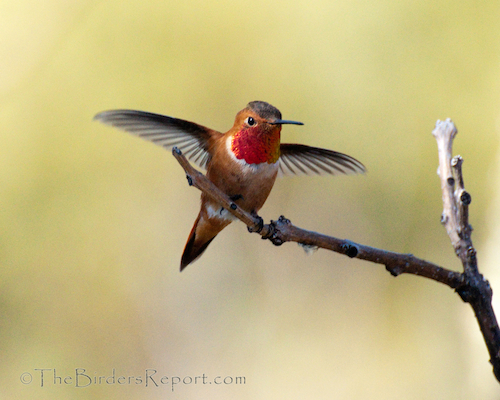 Rufous Hummingbird (Selasphorus rufus) Male photos by Larry Jordan
Rufous Hummingbird (Selasphorus rufus) Male photos by Larry Jordan
The Rufous Hummingbird’s (Selasphorus rufus) size to weight ratio appears to be nearly optimal making it the most maneuverable hummer in North America1. He is so superior in flight that he is known for being “aggressive” toward other hummingbirds. Click on photos for full sized images.
Some of the fabulous colors of hummingbirds (like the male’s gorget) are created by feathers with a grid structure, a grating effect that produces evenly scored lines, with both sides of the grid covered by a smooth membrane1.
Components of white light entering this feather structure are split (refracted) into separate colors.
Refracted light produces colors in their purest form, just like a rainbow. See how this male’s gorget changes color as he turns his head.
No wonder they are called “jewels of the sky,” they are like flying little bits of rainbows! The red color in this bird’s beak is actually just a reflection of the color off his gorget.
When I noticed that one of the feeders was staying full while all the other feeders were being quickly consumed by numerous hummingbirds, I realized that Rufous must be in town. This gorget flashing and tail flaring are aggressive territorial displays by this male Rufous Hummingbird.
As they migrate through California to their breeding grounds in the North…
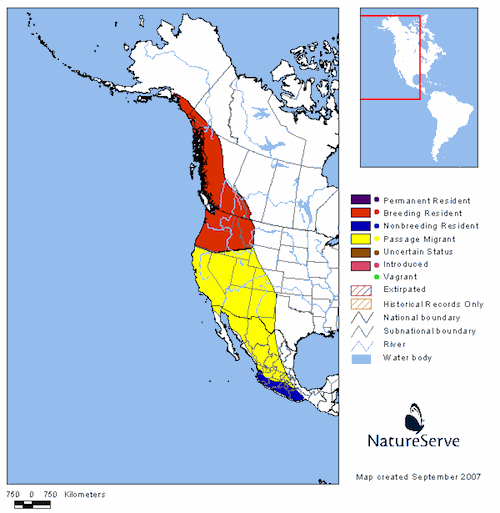
the male will aggressively defend a food source against all comers, even females of his own species.
Here he is showing off that famous hummingbird tongue after chasing off any hummer that came near not only his feeder, but his tree!
Needless to say, this aggressive, territorial behavior gave good photographic capture opportunities of the male Rufous Hummingbird since he was always hanging out in the same tree, near the same feeder!
“What do you think you’re doing up there? This is MY feeder!”
I love having these beauties visit as they pass through on the way to their northern breeding grounds, wondering every year if any of them are going to stay and raise a brood.
My favorite thing about the experience this year was capturing video of this male as he preened just a few yards away!
To see more great bird photos from around the world, check out World Bird Wednesday and come join the fun by sharing your own bird photos!
References: 1Dan True (1994). Hummingbirds of North America. Albuquerque: University of New Mexico Press


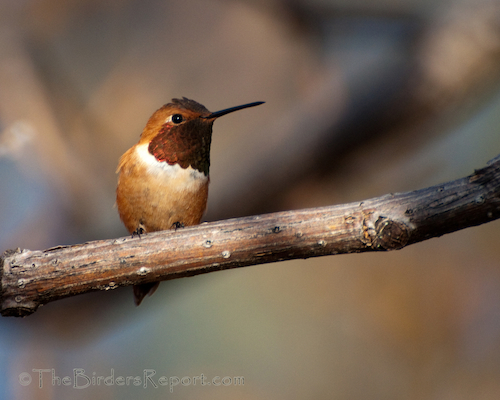
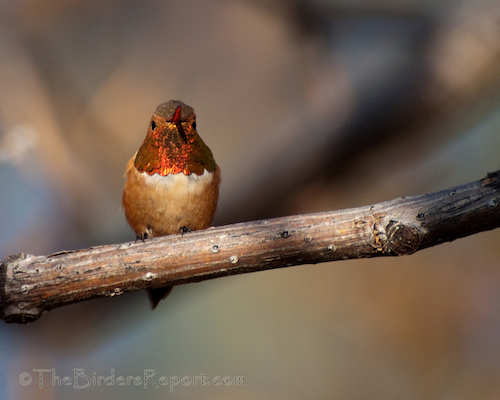
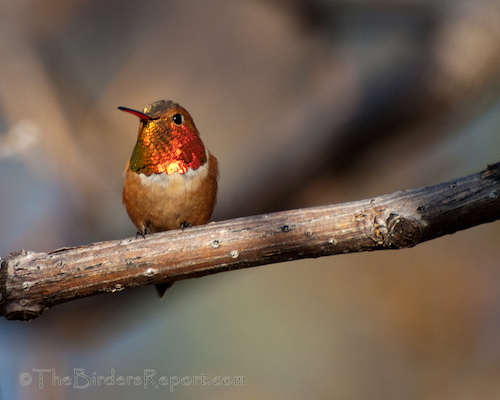
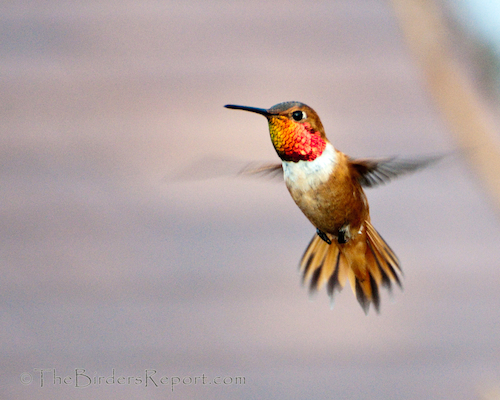
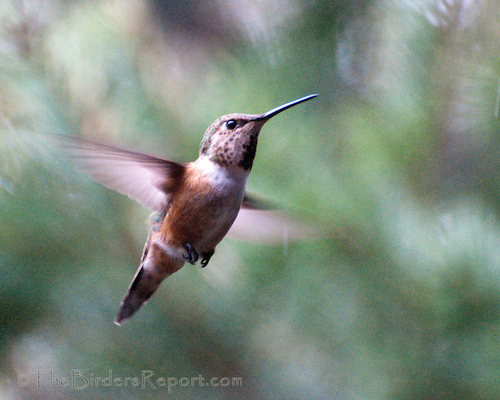
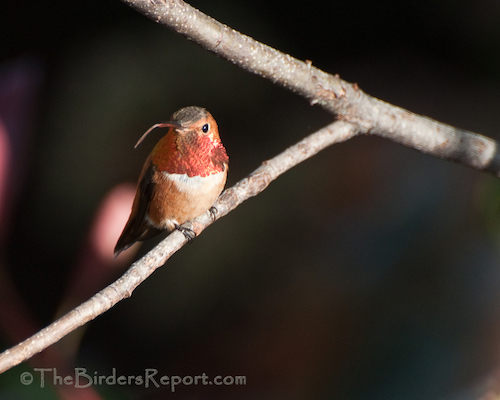
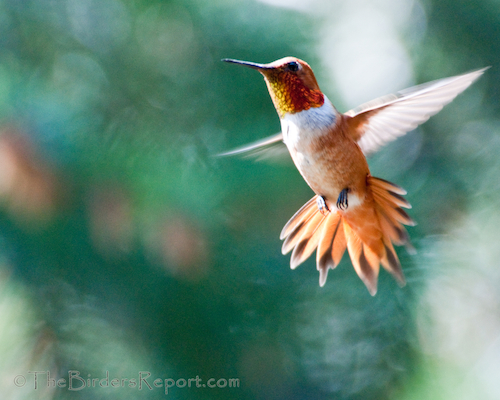
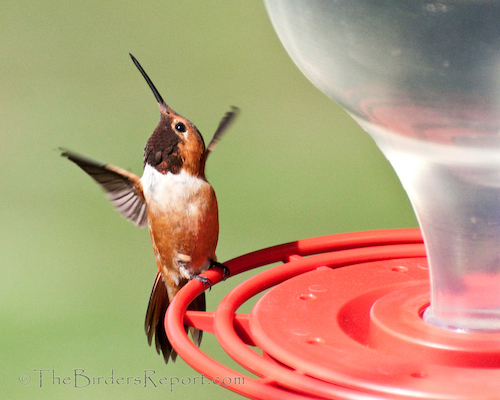



Social Media Connect